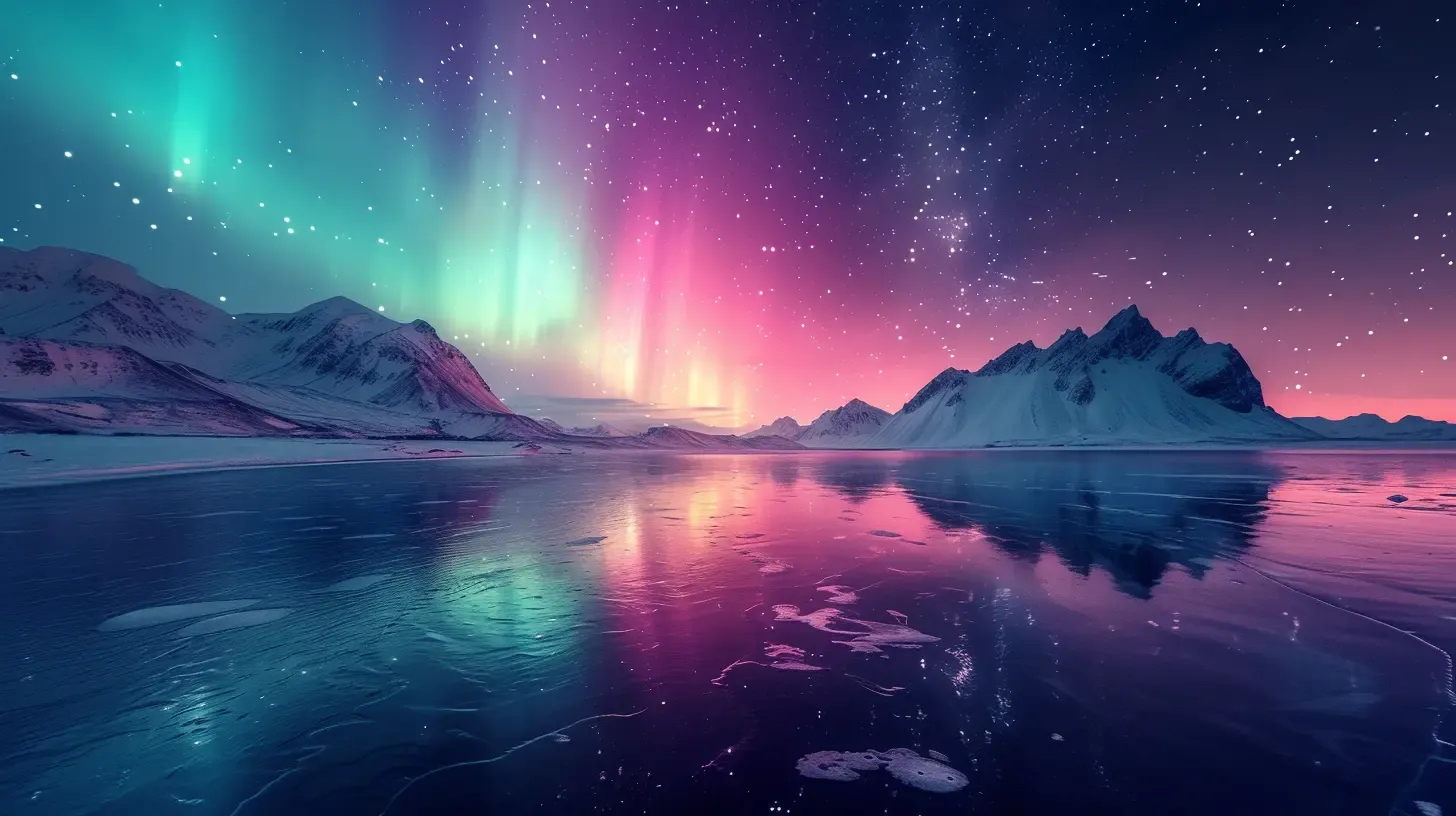09 February 2024
Aurora: A Celestial Symphony of Colors in the Polar Skies.

Press the play button in the top right corner to listen to the article
The aurora, both borealis and australis, present one of nature's most magnificent spectacles, painting the polar skies with vibrant hues. Known respectively as the Northern and Southern Lights, these phenomena occur near the polar regions, casting a magical glow that has fascinated humanity for millennia.
What Are Auroras?
Auroras are natural light displays predominantly seen in the high-latitude regions around the Arctic and Antarctic. They result from interactions between the Earth's magnetosphere and charged particles from the sun. These particles are carried towards the poles by the solar wind and, upon reaching the upper atmosphere, collide with gases like oxygen and nitrogen, creating the awe-inspiring lights known as auroras.
Where and When to Witness the Aurora
The Aurora Borealis is best observed from locations in the northern hemisphere such as Norway, Iceland, Canada, and Alaska. Conversely, the Aurora Australis is a spectacle of the southern hemisphere, visible from Antarctica, New Zealand, and parts of Australia. The optimal time for aurora viewing is during the winter months in each hemisphere, as the long, dark nights provide a perfect backdrop for the lights. However, during periods of strong solar activity, auroras can sometimes be seen at lower latitudes.
The Palette of the Night Sky
The colors of the aurora vary, with green being the most common. This verdant display is due to oxygen molecules located about 60 miles above the Earth. At higher altitudes, above 200 miles, collisions with oxygen produce rare, red auroras. Meanwhile, nitrogen molecules contribute blue or purplish-red to the auroral palette. The intensity and color of the aurora depend on the type of gas particles involved and their altitude.
Differences Between Aurora Borealis and Australis
While the Aurora Borealis and Australis are similar in nature, their occurrences in different hemispheres mean they are often seen from different perspectives and environments. The Aurora Borealis, for example, is set against a backdrop of snowy landscapes, frozen lakes, and dark forests of the north, while the Aurora Australis is often viewed from more remote, less accessible locations in the southern hemisphere. Despite these geographical differences, the underlying mechanisms that produce both auroras are the same.
The content, including articles, medical topics, and photographs, has been created exclusively using artificial intelligence (AI). While efforts are made for accuracy and relevance, we do not guarantee the completeness, timeliness, or validity of the content and assume no responsibility for any inaccuracies or omissions. Use of the content is at the user's own risk and is intended exclusively for informational purposes.
#botnews















































































